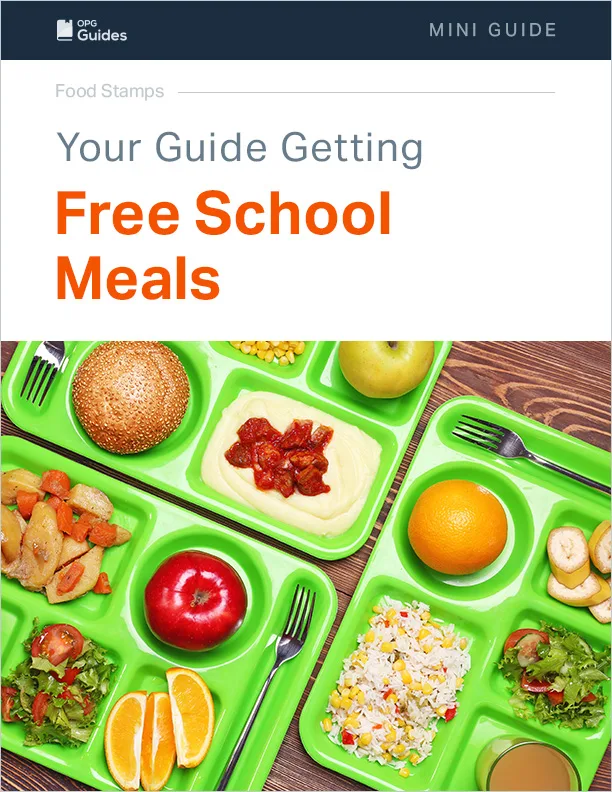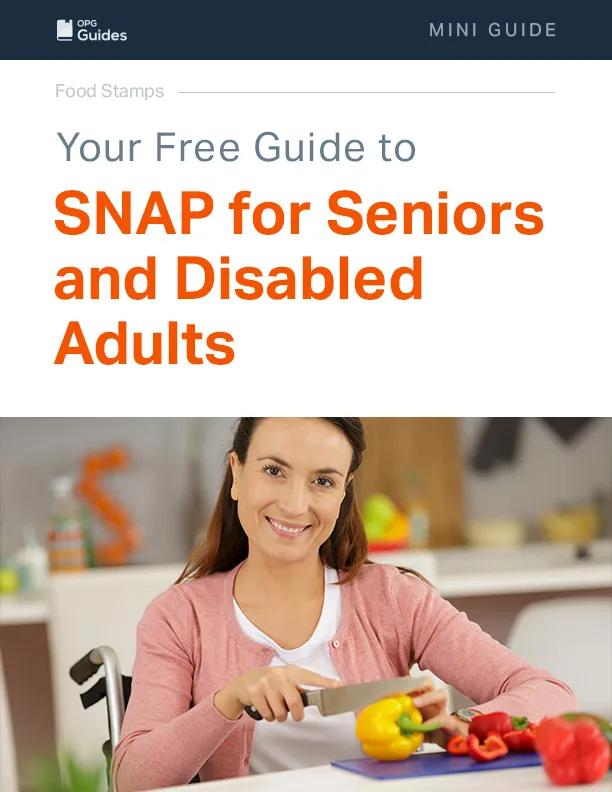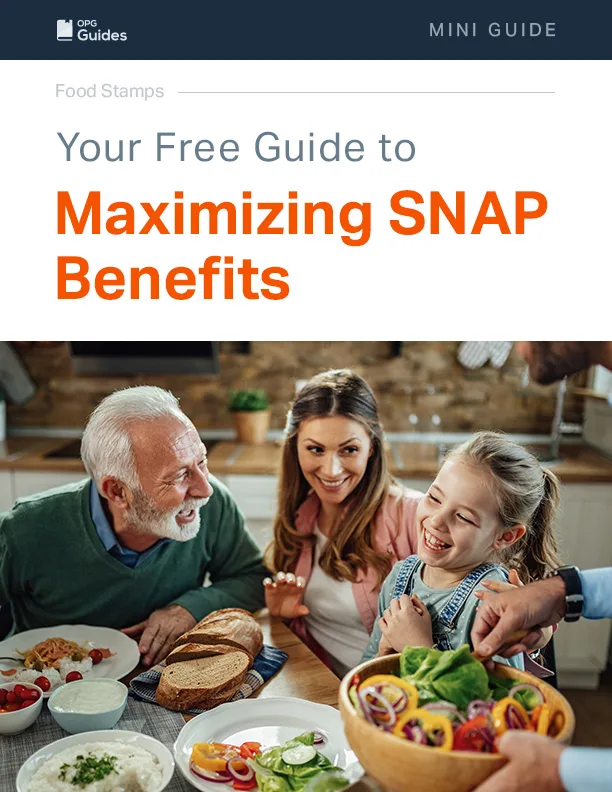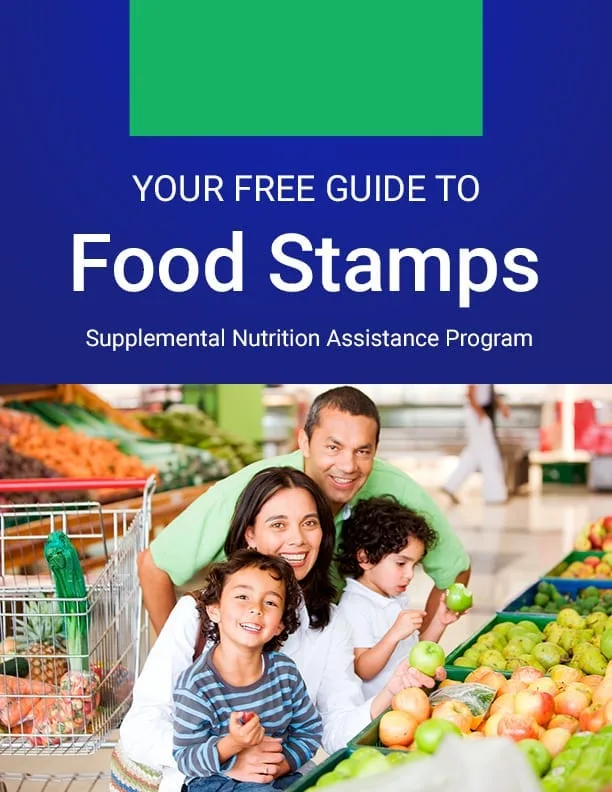Your Free Guide to the SNAP Benefits Changes
Your Free Guide to the SNAP Benefits Changes
We are privately owned and not affiliated with the government in any way or form.

SNAP Resumes as Shutdown Ends
u003cp data-start=u0022181u0022 data-end=u0022422u0022u003eu003cstrongu003eNovember 18, 2025 – u003c/strongu003eSNAP benefits have resumed now that the federal shutdown has ended.u003c/pu003ernu003cp data-start=u0022181u0022 data-end=u0022422u0022u003eu003cstrongu003eNovember 10, 2025u003c/strongu003e – u003cspan style=u0022font-weight: 400;u0022u003eSNAP benefits for November u003c/spanu003eu003cbu003ehave started to go out in some statesu003c/bu003eu003cspan style=u0022font-weight: 400;u0022u003e, but the status remains uncertain amid ongoing legal disputes and government funding delays. The Trump Administration is alsou003c/spanu003eu003cstrongu003eu003ca href=u0022https://www.nytimes.com/2025/11/09/us/politics/trump-administration-states-undo-full-snap-food-stamps.htmlu0022u003e working to undo any paymentsu003c/au003eu003c/strongu003eu003cspan style=u0022font-weight: 400;u0022u003e already sent, though it remains unclear if that can happen.u003c/spanu003eu003c/pu003ernu003cp data-start=u0022181u0022 data-end=u0022422u0022u003eu003cstrong data-start=u0022181u0022 data-end=u0022201u0022u003eNovember 3, 2025u003c/strongu003e – The federal government plans to u003cstrong data-start=u0022236u0022 data-end=u0022284u0022u003eresume SNAP payments using contingency fundsu003c/strongu003e, but the amount isn’t enough to cover full benefits. Many households are expected to receive roughly u003cstrong data-start=u0022386u0022 data-end=u0022419u0022u003ehalf of their normal paymentsu003c/strongu003e.u003c/pu003ernu003cp data-start=u0022424u0022 data-end=u0022677u0022u003eu003cstrong data-start=u0022424u0022 data-end=u0022444u0022u003eOctober 31, 2025u003c/strongu003e – A federal court ordered the Trump Administration to use contingency funds to keep SNAP running. Even so, u003cstrong data-start=u0022552u0022 data-end=u0022590u0022u003estates may still experience delaysu003c/strongu003e in distributing benefits, and the Administration is expected to appeal the decision.u003c/pu003ernu003cp data-start=u0022679u0022 data-end=u0022897u0022u003eu003cstrong data-start=u0022679u0022 data-end=u0022699u0022u003eOctober 27, 2025u003c/strongu003e – The USDA previously confirmed that u003cstrong data-start=u0022737u0022 data-end=u0022786u0022u003eno SNAP benefits would be issued for Novemberu003c/strongu003e due to the ongoing federal government shutdown, leaving millions of households uncertain about food support.u003c/pu003e
2025 Government Shutdown: What SNAP Recipients Need to Know
Note:
The information below may be outdated as the government shutdown ended in late November 2025. Any information below should be considered historical in context.
When the federal government shut down in October 2025, the U.S. Department of Agriculture (USDA) initially announced that Supplemental Nutrition Assistance Program (SNAP) benefits would be paused. With no funding available, regular monthly payments could not be issued, leaving millions of households uncertain about food support.
USDA’s Plan: Partial Benefits for November
In a November 2025 court filing, the USDA confirmed it would tap into its $4.6 billion contingency fund to issue partial SNAP benefits for November. Since a full month of SNAP payments nationwide typically costs about $9 billion, recipients can expect roughly half of their normal benefit amount.
The USDA also warned that states may experience technical delays or system issues while adjusting their payment systems for the reduced benefits. Depending on state-level processes, updates could take weeks or even months to fully implement.
What about now?
As of November 10, 2025, the Trump administration told states to stop their plans for full SNAP benefits, warning of penalties for noncompliance. The move confused many officials, some of whom explored legal action, but a federal appeals court later allowed full November payments to continue. The status of payments continues to change daily.
What SNAP Households Can Expect
- Lower payment amounts: Some households may receive about 50% of their usual benefits.
- Possible delays: Payment timing may vary as state systems adjust to the new amounts.
- Application slowdowns: New applicants or households reporting recent changes in income or household size may face longer processing times.
- Ongoing uncertainty: If the shutdown continues without additional funding, further reductions—or even temporary suspensions—could occur in the coming months.
Steps SNAP Recipients Can Take
Even with reduced benefits, there are ways to stretch resources and access support:
- Check your EBT balance: Log in to your state’s portal, mobile app, or call the number on your card to confirm funds.
- Plan purchases carefully: Focus on affordable, shelf-stable foods while benefits are available.
- Find local food assistance: Locate food banks, community pantries, or meal programs via 2-1-1 or your state’s social services website.
- Stay informed: Follow updates from your state’s human services or agriculture department.
- Keep applications current: States are still accepting SNAP applications and renewals—submit paperwork promptly to avoid delays.
- Adjust your budget: Temporarily reduce non-essential spending and consider additional programs such as WIC, local church food drives, or community meal services.
Assistance for Families During SNAP Reductions
With over 42 million Americans relying on SNAP each month, this funding gap is especially difficult as the holidays approach. Fortunately, several national and local organizations provide additional support:
- Feeding America: Nationwide food banks and meal programs. Use their Thanksgiving Meal Finder to locate free meals or food boxes nearby.
- AmpleHarvest.org: Connects households to local food pantries and community gardens for fresh produce and groceries.
- Salvation Army: Many local branches offer free Thanksgiving dinners or food baskets. Check your nearest location for details.
- United Way 2-1-1: Call 2-1-1 or visit 211.org to find nearby community meal programs, food pantries, and emergency services.
- Local faith and community centers: Churches, mosques, synagogues, and other community organizations often host free holiday meals. Listings are available via 2-1-1 or Feeding America directories.
The Thrifty Food Plan, which is used to determine Supplemental Nutrition Assistance Program (SNAP) benefits, is frequently reevaluated by the U.S. Department of Agriculture (USDA). This reevaluation is to determine if any changes are necessary to due cost of living changes.
The maximum SNAP payments have been increased for most states and territories for 2026 as a result of this reevaluation. It is expected that maximum benefits will likely continue to increase as the cost of living increases.
You can view the maximum SNAP benefits by household size below for 2026.
| SNAP Benefits by Household Size (48 States + D.C.) | |
| Household Size | Maximum Monthly Benefit (10/1/2025 – 9/30/2026) |
| 1 | $298 |
| 2 | $546 |
| 3 | $785 |
| 4 | $994 |
| 5 | $1,183 |
| 6 | $1,421 |
| 7 | $1,571 |
| 8 | $1,789 |
| Each additional person | $218 |
| SNAP Benefits by Household Size (Guam) | |
| Household Size | Maximum Monthly Benefit (10/1/2025 – 9/30/2026) |
| 1 | $439 |
| 2 | $806 |
| 3 | $1,157 |
| 4 | $1,465 |
| 5 | $1,743 |
| 6 | $2,095 |
| 7 | $2,315 |
| 8 | $2,637 |
| Each additional person | $322 |
| SNAP Benefits by Household Size (U.S. Virgin Islands) | |
| Household Size | Maximum Monthly Benefit (10/1/2025 – 9/30/2026) |
| 1 | $383 |
| 2 | $703 |
| 3 | $1,009 |
| 4 | $1,278 |
| 5 | $1,521 |
| 6 | $1,827 |
| 7 | $2,019 |
| 8 | $2,300 |
| Each additional person | $281 |
| SNAP Benefits by Household Size (Alaska) | |||
| Household Size | Maximum Monthly Benefit (10/1/2025 – 9/30/2026) | ||
| | Alaska Urban | Alaska Rural 1 | Alaska Rural 2 |
| 1 | $385 | $491 | $598 |
| 2 | $707 | $901 | $1,097 |
| 3 | $1,015 | $1,295 | $1,576 |
| 4 | $1,285 | $1,639 | $1,995 |
| 5 | $1,529 | $1,950 | $2,374 |
| 6 | $1,838 | $2,344 | $2,853 |
| 7 | $2,031 | $2,590 | $3,152 |
| 8 | $2,314 | $2,950 | $3,591 |
| Each additional person | $282 | $360 | $438 |
| SNAP Benefits by Household Size (Hawaii) | |
| Household Size | Maximum Monthly Benefit (10/1/2025 – 9/30/2026) |
| 1 | $506 |
| 2 | $929 |
| 3 | $1,334 |
| 4 | $1,689 |
| 5 | $2,010 |
| 6 | $2,415 |
| 7 | $2,668 |
| 8 | $3,040 |
| Each additional person | $371 |
Allotment information for American Samoa, Commonwealth Northern Mariana Islands (CNMI) and Puerto Rico are not available. Please contact your local office for more information.
Major Changes to SNAP Under New Federal Law
A recently passed law, championed by Republican lawmakers, delivers tax reductions that mainly favor wealthier households. To help offset the cost of those tax breaks, the legislation makes sweeping adjustments to the Supplemental Nutrition Assistance Program (SNAP).
According to research from the Urban Institute, more than 22 million families could see their SNAP benefits reduced—or cut off entirely—under the new policy. The measure cleared both chambers of Congress and was signed into law by President Donald Trump.
SNAP has long served as a critical support system for more than 40 million Americans, including children, seniors, and individuals with disabilities, by helping them afford groceries, reports the Center on Budget and Policy Priorities (CBPP).
What’s Different About the Rules
Under current rules, many adults must either work at least 20 hours per week or qualify for an exemption to continue receiving food assistance beyond a limited time period. The new law broadens these work requirements to apply to groups who were previously exempt, including:
- Adults between the ages of 55 and 64
- Parents whose youngest child is 14 or older
- Certain veterans
These expanded rules took effect in September 2025. Experts warn that even individuals who are already working could unintentionally lose benefits if they fail to document or report their hours properly. The Urban Institute estimates that roughly 3.5 million working families may lose anywhere from $25 to $108 per month.
How States Are Affected
The legislation also shifts some financial responsibility onto states. If a state’s SNAP program has a payment error rate of 6% or higher—meaning too many mistakes are made in determining eligibility or issuing benefits—it will be required to cover part of the program’s costs. Depending on the error rate, states may need to pay between 5% and 15% of benefit expenses.
In 2024, the national average error rate was already 10.9%, suggesting that many states could struggle to meet this requirement. CBPP warns that states unable to cover their share may respond by scaling back benefits or even opting out of SNAP altogether.
Even families who technically remain eligible could still lose assistance if they run into red tape, such as missing renewal deadlines or submitting incomplete paperwork. Children could be hit especially hard, since losing SNAP often means losing access to free or reduced-price school meals and summer food benefits. The new law also clarifies that only U.S. citizens and lawful permanent residents can receive SNAP benefits.
States Gain More Control Over SNAP Food Choices
The USDA is giving states more flexibility to shape their food assistance programs, aiming to encourage healthier eating among SNAP recipients. Under new federal guidance, states can apply for SNAP Food Restriction Waivers to limit purchases of non-nutritious items like sugary drinks, candy, and processed snacks.
These waivers are intended to ensure that SNAP dollars support better nutrition and health outcomes. While no restrictions have taken effect yet, states are now developing proposals, and the first approved changes could begin rolling out in 2026.
2026 SNAP Food Waivers
The chart below lists states that are moving forward with requests to limit certain SNAP food purchases.
This information is accurate as of October 2025. For recent updates, check the USDA’s official page at fns.usda.gov/snap/waivers/foodrestriction
| State | Target Starting Date | What Could Change |
| Arkansas | 07/01/26 | Restricts purchase of soda, fruit and vegetable drinks with less than 50% natural juice, unhealthy drinks, and candy. |
| Colorado | 03/01/26 | Restricts purchase of soft drinks. |
| Florida | 01/01/26 | Restricts purchase of soda, energy drinks, candy, and prepared desserts. |
| Idaho | 01/01/26 | Restricts purchase of soda and candy. |
| Indiana | 01/01/26 | Restricts purchase of soft drinks and candy. |
| Iowa | 01/01/26 | Restricts all taxable food items as defined by the Iowa Department of Revenue except food producing plants and seeds for food producing plants. |
| Louisiana | 01/15/26 | Restricts purchase of soft drinks, energy drinks, and candy. |
| Nebraska | 01/01/26 | Restricts purchase of soda and energy drinks. |
| Oklahoma | 01/01/26 | Restricts purchase of soft drinks and candy. |
| Texas | 04/01/26 | Restricts purchase of sweetened drinks and candy. |
| Utah | 01/01/26 | Restricts purchase of soft drinks. |
| West Virginia | 01/01/26 | Restricts purchase of soda. |
What Families Can Do to Safeguard Their Benefits
With these new requirements in place, recipients may need to take extra steps to protect their access to food aid:
- Track and Report Work Hours Accurately
If you’re subject to work requirements, ensure you’re meeting the 20-hour minimum and keep detailed records. Submit documentation promptly to avoid accidental loss of benefits. - Check Whether the Rules Apply to You
Adults ages 55–64, parents with older children, and some veterans are now subject to work requirements. Confirm with your local SNAP office whether you’re affected and what proof is needed. - Stay on Top of Renewal Deadlines
Missing a recertification date or failing to return paperwork can cut off your benefits, even if you’re still eligible. Mark deadlines on your calendar and stay organized. - Monitor State-Level Changes
States facing financial penalties for high error rates may modify their SNAP programs. Watch for updates from your state agency or local news sources. - Confirm Your Legal Status
Benefits are now limited to U.S. citizens and lawful permanent residents. If your immigration status is uncertain, seek guidance from your local SNAP office or a trusted legal aid group. - Seek Support if Needed
If you risk losing benefits, community organizations, food banks, and nonprofits can often provide emergency food or help navigating the rules. - Stay Engaged and Informed
Advocacy groups like CBPP and local SNAP offices share updates about program changes. Staying informed not only helps you prepare but also gives you opportunities to support efforts protecting food assistance.
Summer EBT Program
When school is out, SUN Bucks steps in to help families keep food on the table. Officially known as Summer EBT, this program gives families $120 in grocery benefits per eligible school-aged child to use during the summer months—when school meals aren’t available.
You can use SUN Bucks at authorized grocery stores and retailers, just like you would with SNAP. It’s available in the following participating states, Tribes, and U.S. territories, and goes by a few different names depending on where you live:
- Alabama
- American Samoa
- Arizona
- Arkansas
- California
- Cherokee Nation
- Chickasaw Nation
- Choctaw Nation of Oklahoma
- Colorado
- Connecticut
- Delaware
- District of Columbia
- Guam
- Hawaii
- Illinois
- Kansas
- Kentucky
- Louisiana
- Maine
- Maryland
- Massachusetts
- Michigan
- Minnesota
- Missouri
- Montana
- Muscogee Creek Nation
- Nebraska
- Nevada
- New Jersey
- New Mexico
- New York
- North Carolina
- North Dakota
- Northern Mariana Islands
- Ohio
- Oregon
- Otoe-Missouria Tribe
- Pennsylvania
- Utah
- Vermont
- Virginia
- Washington
- West Virginia
- Wisconsin
SUN Bucks can be added on top of other food programs like SNAP, WIC, and even free summer meal sites or grab-and-go SUN Meals in some rural areas.
Who Can Get SUN Bucks?
Your child may automatically get SUN Bucks if your household already receives:
- SNAP
- TANF
- FDPIR
- Or if your child gets free or reduced-price meals at a school that participates in the National School Lunch Program or School Breakfast Program.
If you’re not automatically enrolled, you may still qualify. You’ll need to meet income guidelines and apply through your state’s Summer EBT agency.
How SUN Bucks Are Sent
Once approved, benefits are either:
- Added to an existing SNAP EBT card
- Sent on a separate EBT card
- Or delivered in another way depending on how your state, Tribe, or territory runs the program
What Can SUN Bucks Buy?
You can use SUN Bucks to purchase the same kinds of foods you would purchase using SNAP benefits. So, things like fruits and vegetables, meat, poultry, fish, cereal, bread, and other snack foods are approved.
You can’t use SUN Bucks to buy hot or prepared foods. You also cannot use them to purchase cleaning supplies, household products, medicine, personal care products, or alcohol.
SNAP Benefits Information and Links Per State:
If you have any questions regarding the benefits in your state or these recent changes, please review the resource below that provides information for each state, including the website, online application form (where applicable), phone number and other important information you may need in order to get the answers you’re looking for.
Find your state or territory’s benefits issuance schedule here: https://www.fns.usda.gov/snap/monthly-issuance-schedule
Source: https://www.fns.usda.gov/snap/state-directory





